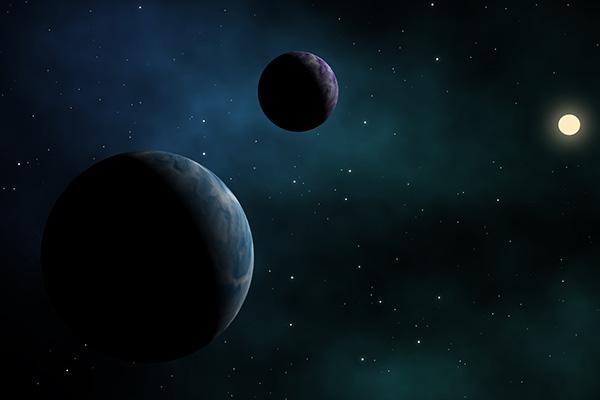
Title: Tempests in the Extrasolar Skies: Detecting Storms, Spots, and Waves on Super Jupiters and Brown Dwarfs
Abstract:
Brown dwarfs are substellar objects approximately an order of magnitude more massive than Jupiter but below the threshold necessary to burn hydrogen and become a main-sequence star. Although we have learned much about the atmospheres of brown dwarfs, and lower mass planetary-mass objects, over the past 30 years since the first observation of such an object, open questions remain about the driver of these objects’ variability. Brown dwarfs, particularly those at the L/T spectral transition (Teff ~ 1300 K), exhibit high spectroscopic and photometric variability which has been attributed to dynamic atmospheric processes. Theories invoking storms and vortices (spotted-models) and planetary-scale waves contained within Jupiter-like banded-structures (wave models) have been proposed to explain this variability. To address these mysteries, I first developed a unified analytical spectroscopic and photometric technique to infer surface inhomogeneities on stellar and substellar objects. The method was validated against archival data of Luhman 16B, a nearby, L/T transition brown dwarf. I then used the analytical technique to predict Doppler imaging performance for planned extremely large telescope spectrographs. I found these instruments capable of mapping the surfaces of brown dwarfs and planetary-mass objects such as VHS 1256 b, SIMP0136, and Beta Pic b. To further test my analytical framework, I applied it to real-world spectra collected at the Large Binocular Telescope, detecting a persistent polar dark spot on a pre-main sequence, T Tauri star. The extent of the spot suggested non-solar like dynamo processes. To conclude, I applied both spotted and wave models to multi-color, near-infrared (NIR) photometry of SIMP0136. Based on goodness-of-fit tests, I find wave models to be preferred. Moreover, the spotted models’ inferred radii are unphysical based on the Rossby deformation radius and Rhines’ scale. Through the correlation between light curves produced by the waves and associated color variability, we find evidence of planetary-scale, wave-induced cloud modulation and breakup, similar to Jupiter’s atmosphere and supported by general circulation models.
